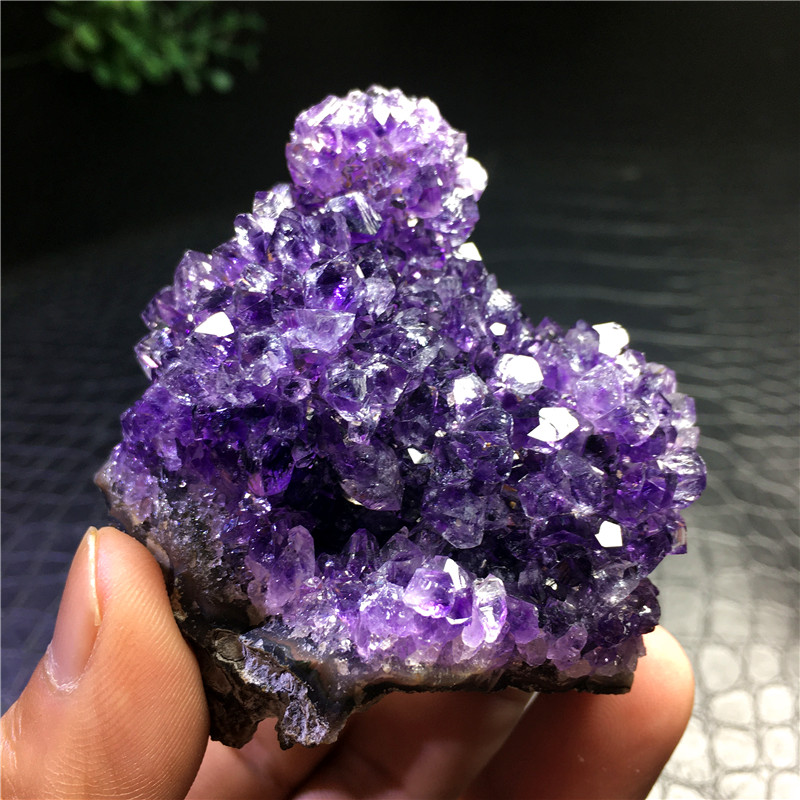Amethyst: A Natural Treasure and Spiritual Stone
Share
The Natural Beauty of Amethyst
Amethyst, one of the most renowned members of the quartz family, has a chemical composition of silicon dioxide (SiO₂). Its captivating purple hues—ranging from pale lavender to deep violet—stem from trace amounts of iron. The crystals typically form hexagonal prisms with a vitreous luster and may contain natural inclusions or iridescent effects, creating unique "phantom crystal" patterns. Major sources include Brazil, Uruguay, Zambia, and Russia, with Uruguay’s deep purple amethysts being particularly prized.

Metaphysical Energies and Spiritual Significance
In metaphysics and energy healing, amethyst is revered as the "Stone of Wisdom" and a "Spiritual Guardian," its vibrations deeply intertwined with human consciousness.
1. Key to the Crown and Third Eye Chakras
Within the seven-chakra system, amethyst resonates with the **Crown Chakra** (Sahasrara) and the **Third Eye Chakra** (Ajna).
- Crown Chakra: Facilitates connection to cosmic energy, promoting spiritual awakening and inner peace.
- Third Eye Chakra: Enhances intuition, insight, and focus during meditation or dream analysis.

2. Astrology and Protective Talismans
- **Zodiac Associations**: Amethyst is the guardian stone for Pisces and Aquarius. It balances the emotional sensitivity of water signs while amplifying the innovative thinking of air signs.
- **Protective Power**: Ancient Romans inlaid amethysts into drinking vessels or wore them as jewelry to ward off intoxication and negative energies. In medieval Europe, bishops wore amethyst rings as symbols of divine protection.
3. Feng Shui and Energy Cleansing
- Place in study areas or workspaces to enhance mental clarity.
- Position near bedsides to alleviate insomnia and anxiety.
- Cleanse its energy field regularly with moonlight or sage smoke.
Mystical Reverence Across Civilizations
- **Ancient Egypt**: Pharaohs carved amethyst into scarab beetles as talismans for the afterlife.
- **Ancient Greece**: Myth holds that amethyst formed from the tears of Dionysus, the god of wine, earning it the title "Stone of Sobriety."
- **Eastern Traditions**: In Buddhism, it is regarded as the "Stone of Enlightenment," often used for prayer beads to aid meditation.

Conclusion: Bridging Science and Spirituality
Amethyst stands as both a geological marvel and a bridge to humanity’s spiritual explorations. Whether cherished as a collectible, adornment, or metaphysical tool, its violet glow reminds us that infinite possibilities lie where reason and mysticism converge. 
